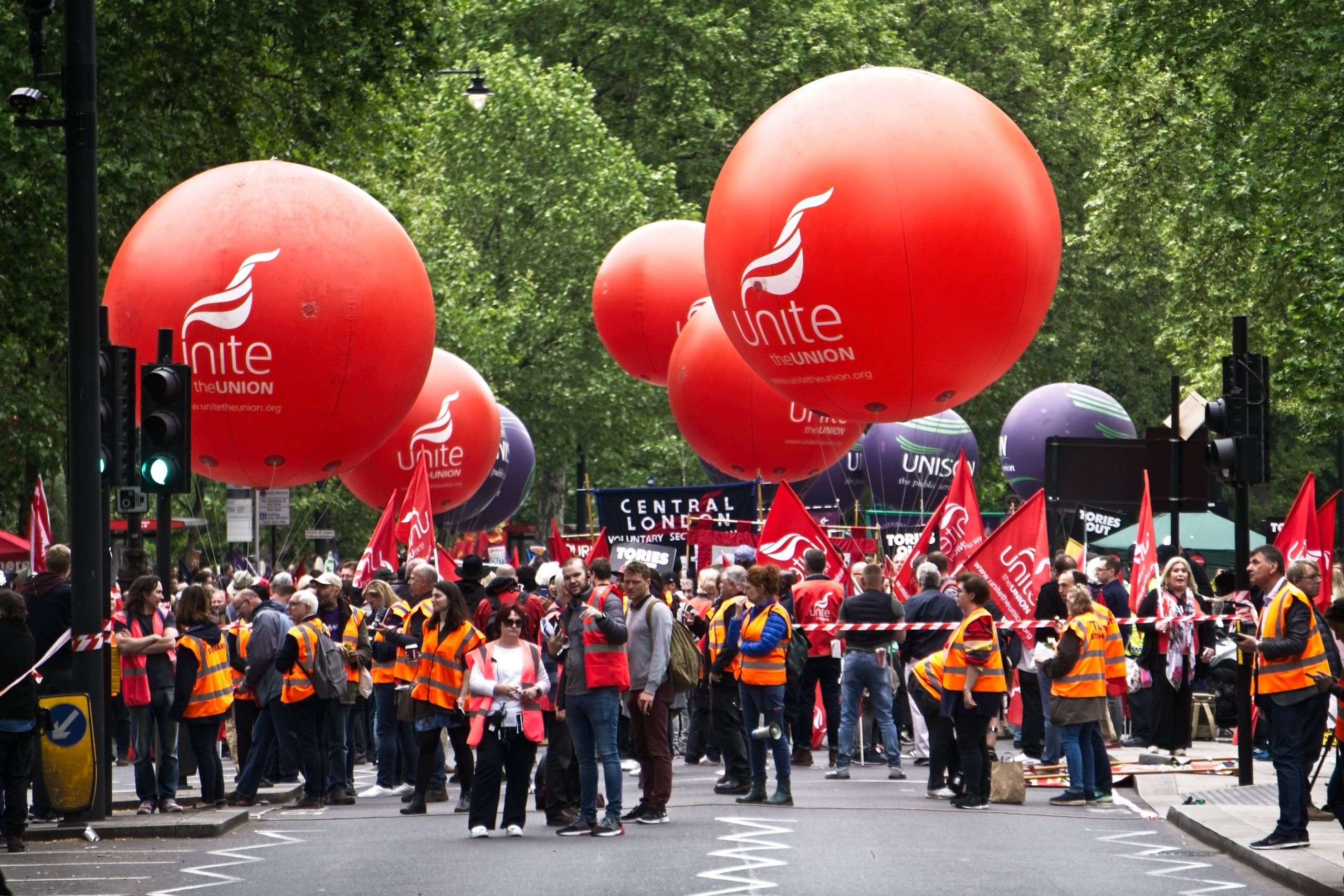In a UK wracked by a Tory-manufactured cost of living disaster, something to be cheerful about is what appears to be a moment of renewal for our trade unions. Proportionate membership was at an all time low in 2016, when just 6.2 million people in the UK were in trade unions – barely 10% of the population – well below the peak of over 13 million trade union members in 1979. Since 2016 however the trend seemed to reverse, with membership levels rising for 4 consecutive years, unheard of since the 1970s. One BBC reporter recently went so far as to speculate on whether we’re entering a new golden age for trade unions.
There really are things to celebrate. There are two recent high profile examples of new and existing trade unions organising in the private sector, across the Atlantic, with the new independent Amazon Labor Union winning recognition and the SEIU supporting a front group to win over 100 recognition agreements at Starbucks in a wildfire campaign.
And in the UK, since Sharon Graham’s surprise 2021 election victory she’s already overseen a record number of strikes and victorious disputes at Unite since its amalgamation in 2007. The longest strike in Unites post-amalgamation history was 2022’s Chep strike, which was not only successful, but euphoric. I visited the Chep strike to find picket lines which were actually fun, and solidarity demonstrations which had flares, the PCS Samba band, and direct action, as some attendees blocked entrances where scabs were driving in. If the Chep strike is a sign of things to come across the movement that would be very exciting.
Over the past 13 months, the Trades Union Congress has logged at least 300 disputes in different industries and has said there’s more industrial action now than over the last 5 years. This bump is partially due to the new freedom from covid regulations, but it’s also an indication that more workers are challenging real terms pay cuts after a decade of wage stagnation following the 2008 banking crash.
Beneath the surface however, things aren’t all rosy. The recent uptick in strike action only seems high in comparison to 2018, when UK worker strike totals had fallen to one of the lowest all-time levels, and aren’t yet near the peaks of industrial action in the 20th century. Unions taking strike action is not also necessarily a sign of strength, the University and College Union recently abandoned their national approach to industrial action after internal division and waning enthusiasm from members towards their dispute strategy.
In 2021, trade union membership levels actually fell for the first time in 4 years, with the proportion of UK employees in unions going down by 0.6% to 23.1%. The four years of modest growth in trade union membership were mainly driven by public sector members (especially in care and education). Increasingly bad working conditions have led people to leave the education and health sectors in 2021, and labour shortages across much of the UK economy means that work is easier to find in the far less unionised private sector.
Private sector union density continued to fall during the years of overall growth. The private sector employs the vast majority of the UK’s more than 24 million full-time workers, and membership density remains dismal with only around 12% of private sector workers belonging to a union. If unions could find a way to reverse this decline, the benefits would be great for their long term survival, workers in the private sector tend to be younger, and unions have an age problem. In 2020 around 75% of employees who were trade union members were aged 35 or over.
The Resolution Foundation recently reported that union density is even lower among the lowest-paid workers, at around 10%, and shockingly just 4% for people working in the hospitality sector, some of the most visible workspaces. The elusive task of increasing trade union membership density in the private sector, and training and empowering those members to take action and win, remains perhaps the biggest challenge facing the labour movement today.
With the OBR estimating that we could now be facing the fastest fall in living standards since modern records began, and the Bank of England forecasting a recession, social unrest and anger in this decade are likely to increase. It is too soon however to be declaring a new golden age for trade unions, most of the gains that have been made have been modest and in areas the labour movement is already strong, such as the public sector. There are some hopeful signs that recent anger and unrest could be channelled into more members in trade unions, more victories in disputes, and a resurgence of trade union power – but it is in the hands of trade unionists to make this their moment, not simply expect the golden age to flower on its own.


